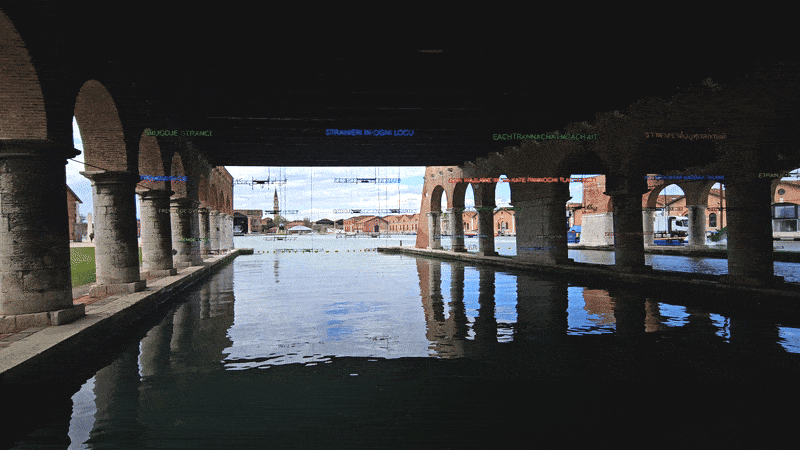Words and Images Patrick Kasingsing (Venice Biennale 2024)
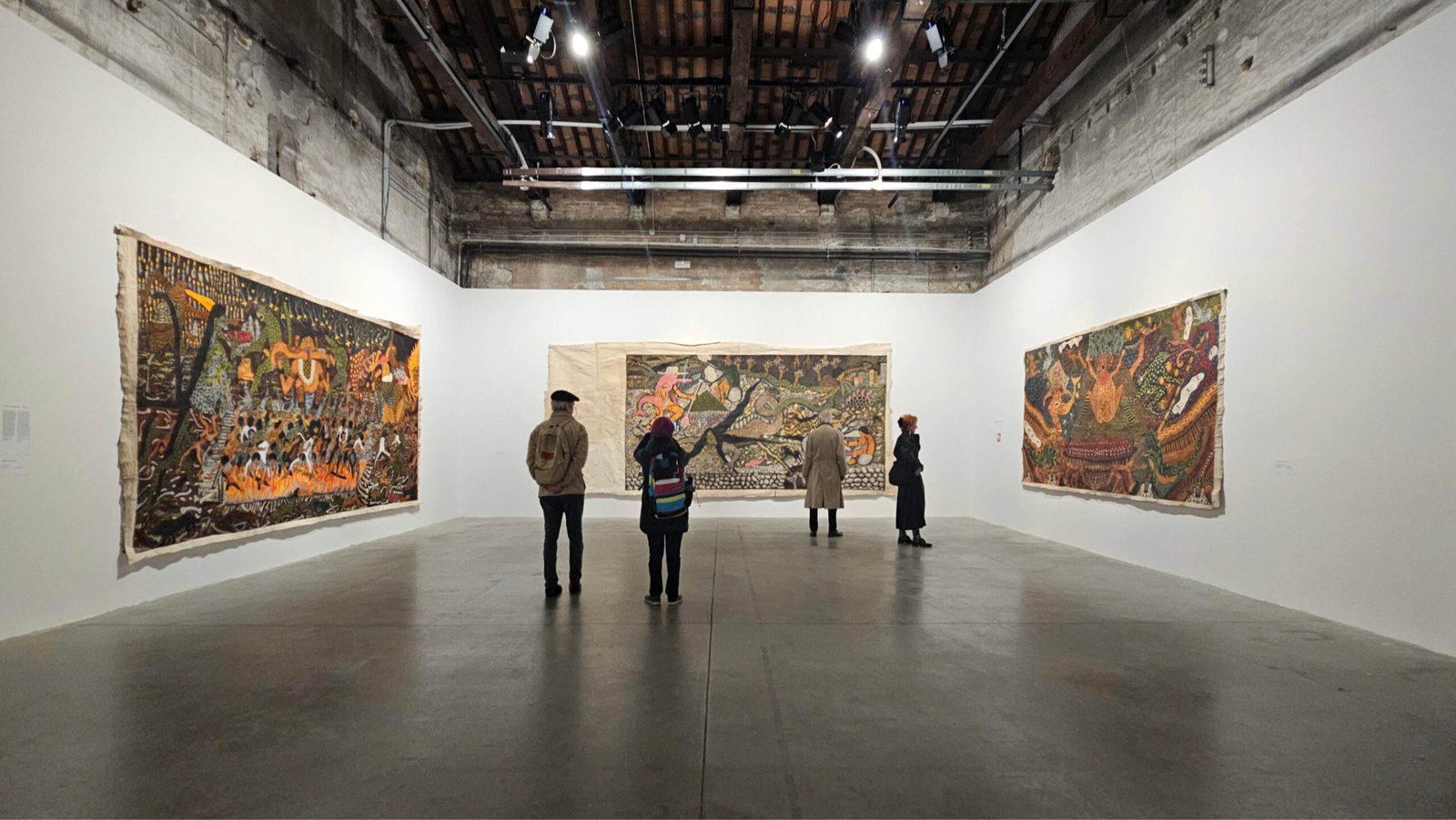

Venice Biennale 2024 curator Adriano Pedrosa’s closing remarks for his Biennale Guide foreword stuck with me: “His [former Biennale president Roberto Cicutto]) only request was for me to construct an exhibition full of beauty. I gather we are delivering a foreign, strange, uncanny, and Queer sort of beauty.”
This year’s La Biennale theme, “Stranieri Ovunque” (Foreigners Everywhere), really hit home as I fumbled my way through Italy for the first time. I knew I was out of my depth when I missed my train to Venice from Mestre, thanks to the chaotic Italian train schedules. When I finally made it to La Serenissima, beautiful even with gray skies, I saw that “Foreigners Everywhere” wasn’t just a theme for the Biennale—it was the city’s reality. I joined folks from all over the world, trying to find my way to the Arsenale through the city’s maze-like streets that seemed to vanish and reappear on Google Maps.
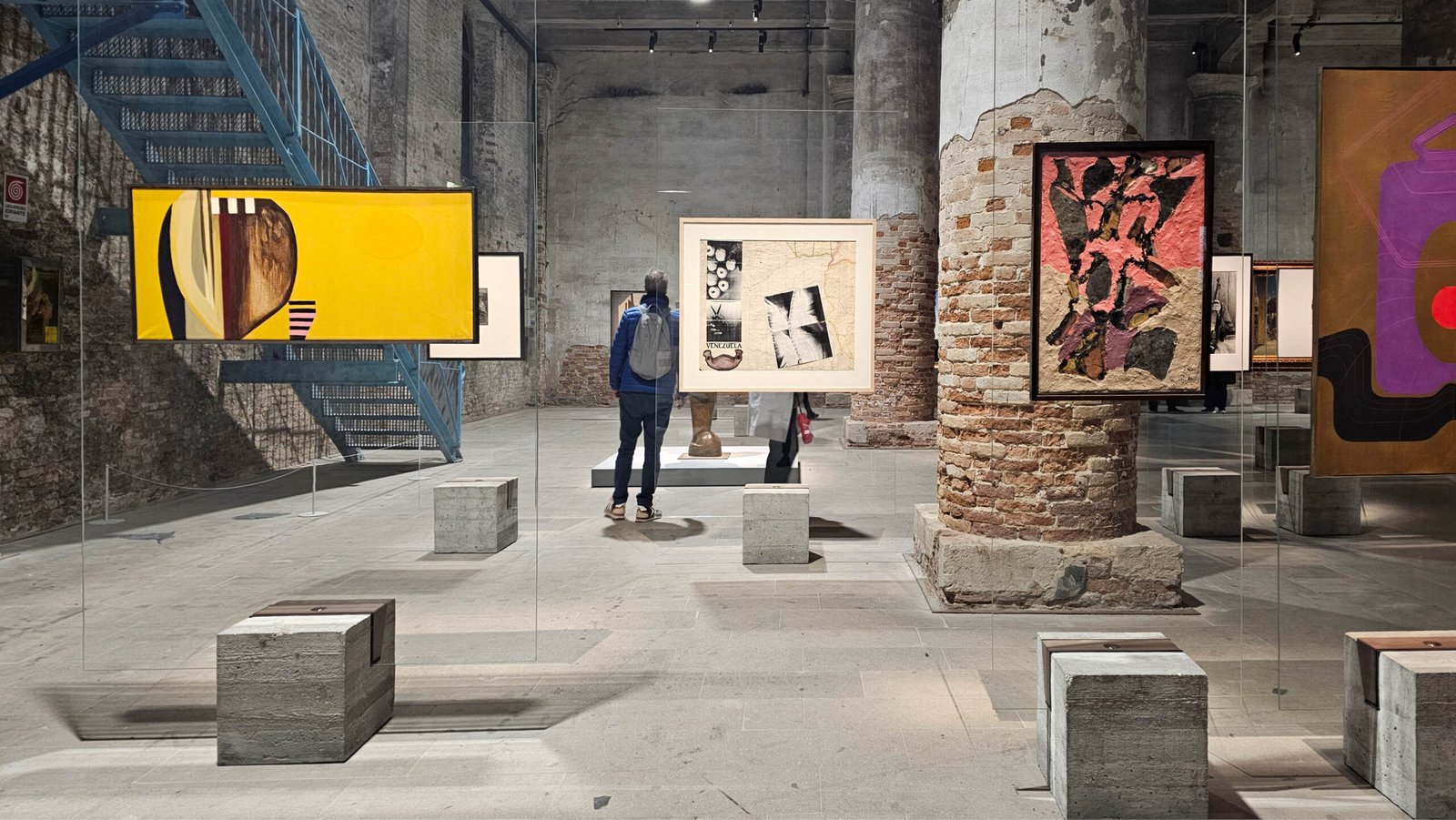



Finally setting eyes on the exhibition’s namesake at the Arsenale Gaggiandre, where a collection of neon signages by the Palermo-based collective Claire Fontaine depicts the phrase in more than fifty tongues, I feel the trepidation of being a Venice Biennale first-timer slowly melt away. As visitors from all around the globe, magnetized by the spectacle, approach, their multilingual babble mirrors the randomized blinking of the neon signs suspended above what was previously a busy shipyard. A Chinese couple asks for my help with their photo in Mandarin, and I gladly oblige.
I felt more at home as I walked past the exhibition halls and pavilions, hosting hundreds of fellow ‘foreigners’ and many artists and collectives from the Global South making their La Biennale debuts. I was introduced to the four types of artistic ‘foreigners’ that Pedrosa spoke of in his foreword, and whose works finally shine under the Biennale spotlight: the Queer artist, the renegade artist, the artista popular, and the Indigenous artist. And, of course, with the noticeable pavilion absences and presence of armed security, I am reminded that beyond these scenic corners, foreigners around the globe are subjected to evil, discrimination, and placelessness. The United Nations High Commissioner for Refugees (UNHCR) 2023 estimate considers 117.2 million people around the globe to have either been “displaced or stateless,” an all-time high.


This year’s La Biennale National Pavilions offer visitors a dive into the multifaceted narratives of the ‘foreign’ in all its texture and color. Here are some memorable pavilions I visited (still ruing the day I didn’t queue for the eventual Biennale Golden Lion winner, Australia), providing a good sampling of what to expect at this year’s La Biennale Arte di Venezia. The exhibition, which spans the entirety of Venice but centers most programming in the Arsenale and Giardini, runs from April 20 to November 24, 2024.
Initially tasked with producing an exhibition of the beautiful, Pedrosa has instead curated a show of what beauty can be in this turbulent world.
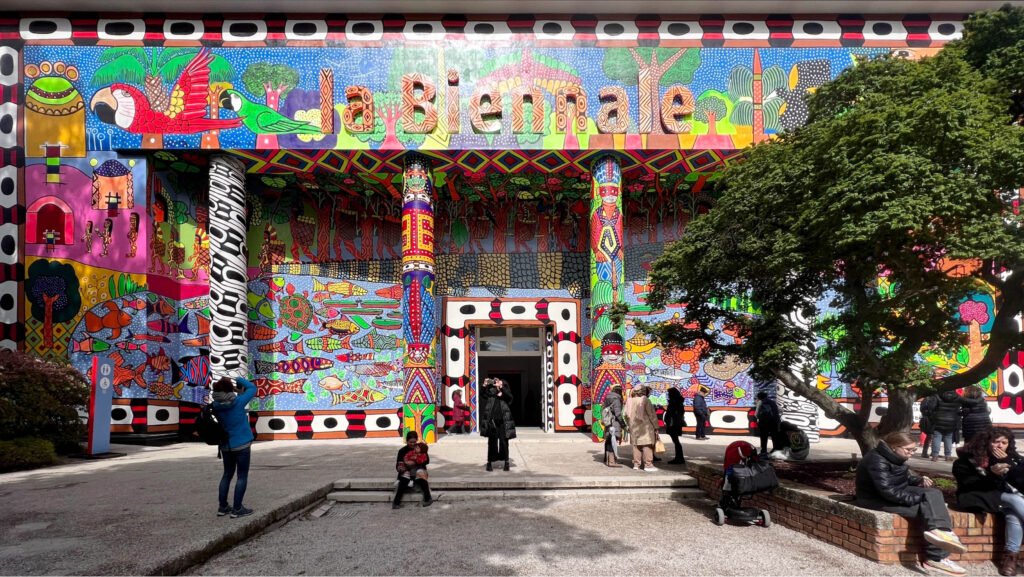

National Pavilions
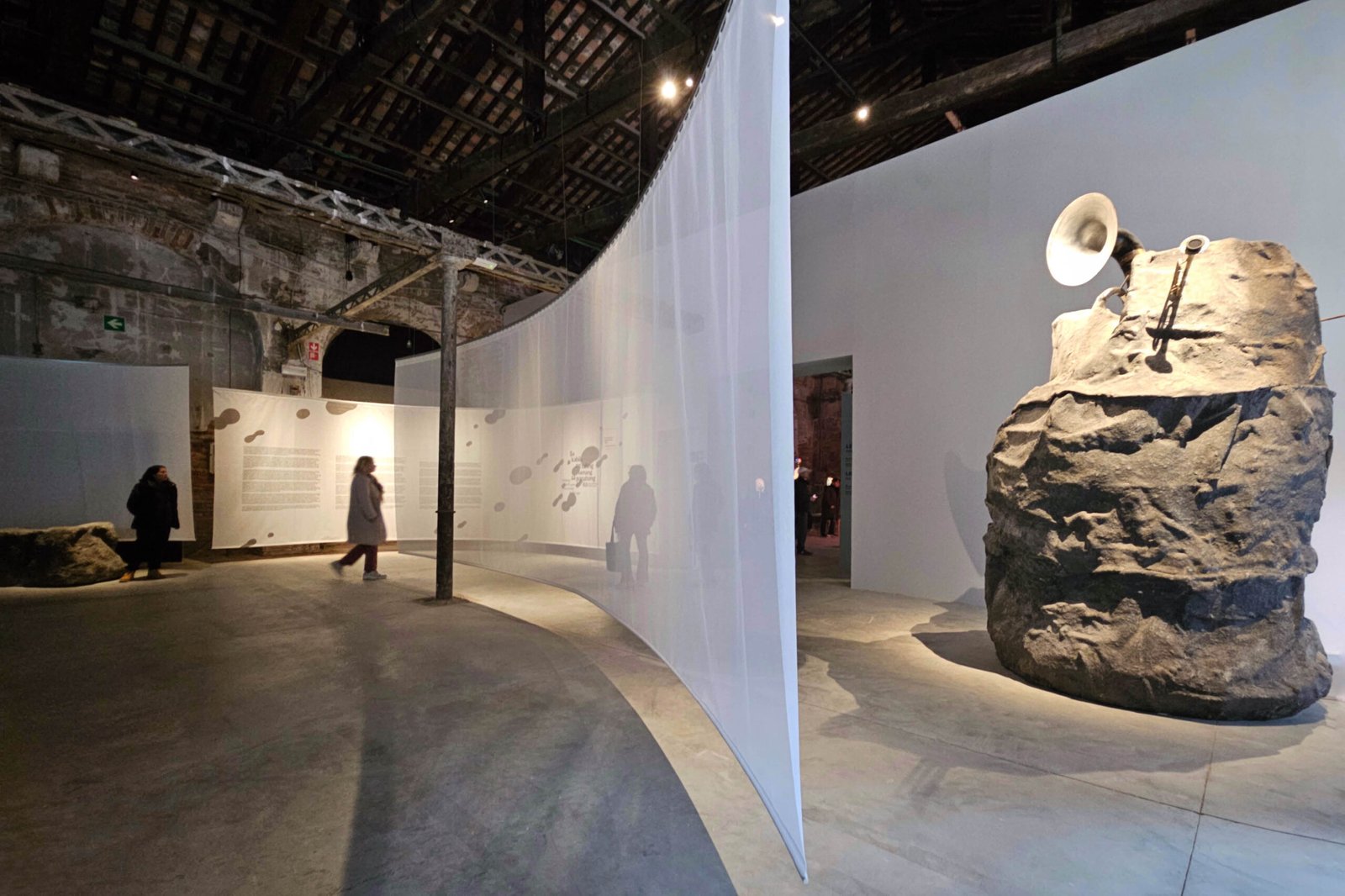

The Philippines
Sa Kabila ng Tabing Lamang sa Panahong Ito
Curator: Carlos Quijon, Jr. Artist: Mark Salvatus
Giant fiberglass rocks with trumpet protrusions, hissing noises from seemingly nowhere, and curving swathes of sheer white curtains resembling low-lying forest fog compose Quijon Jr. and Salvatus’ theatrical Mount Banahaw mise en scène for this year’s Philippine Pavilion. Titled after the words of religious leader and revolutionary Hermano Pule, the pavilion is a visual and aural exposition of the ethno-ecologies of Mount Banahaw, to which Lucban, the artist’s hometown, is inextricably linked. Immersive video work and sound design transport visitors to the mountain, where UFO dances, mariners, religious occurrences, and family outings collide in a Filipino-flavored lens on encounters with the unknown. Yes, you can sit on the rocks.
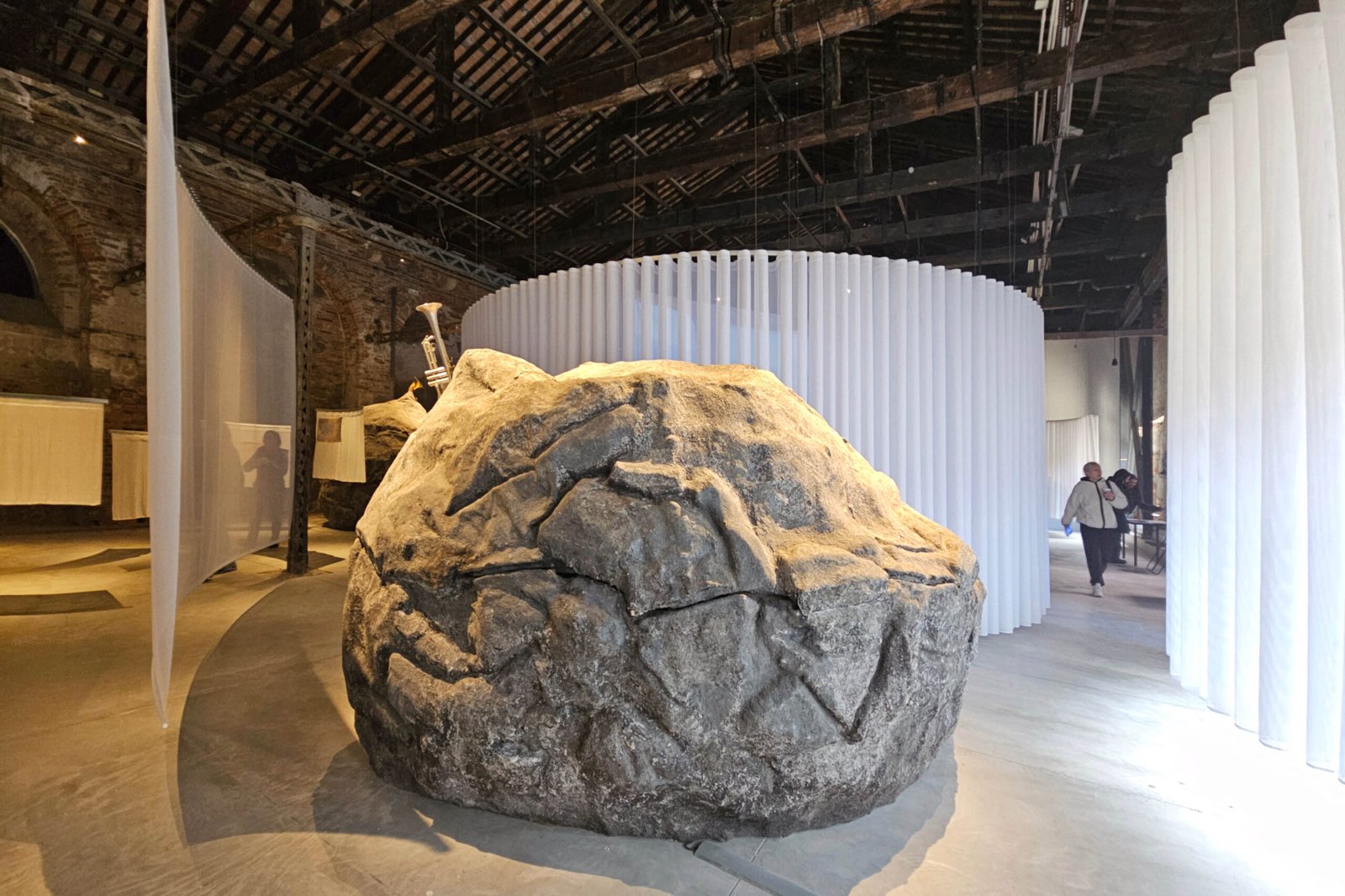
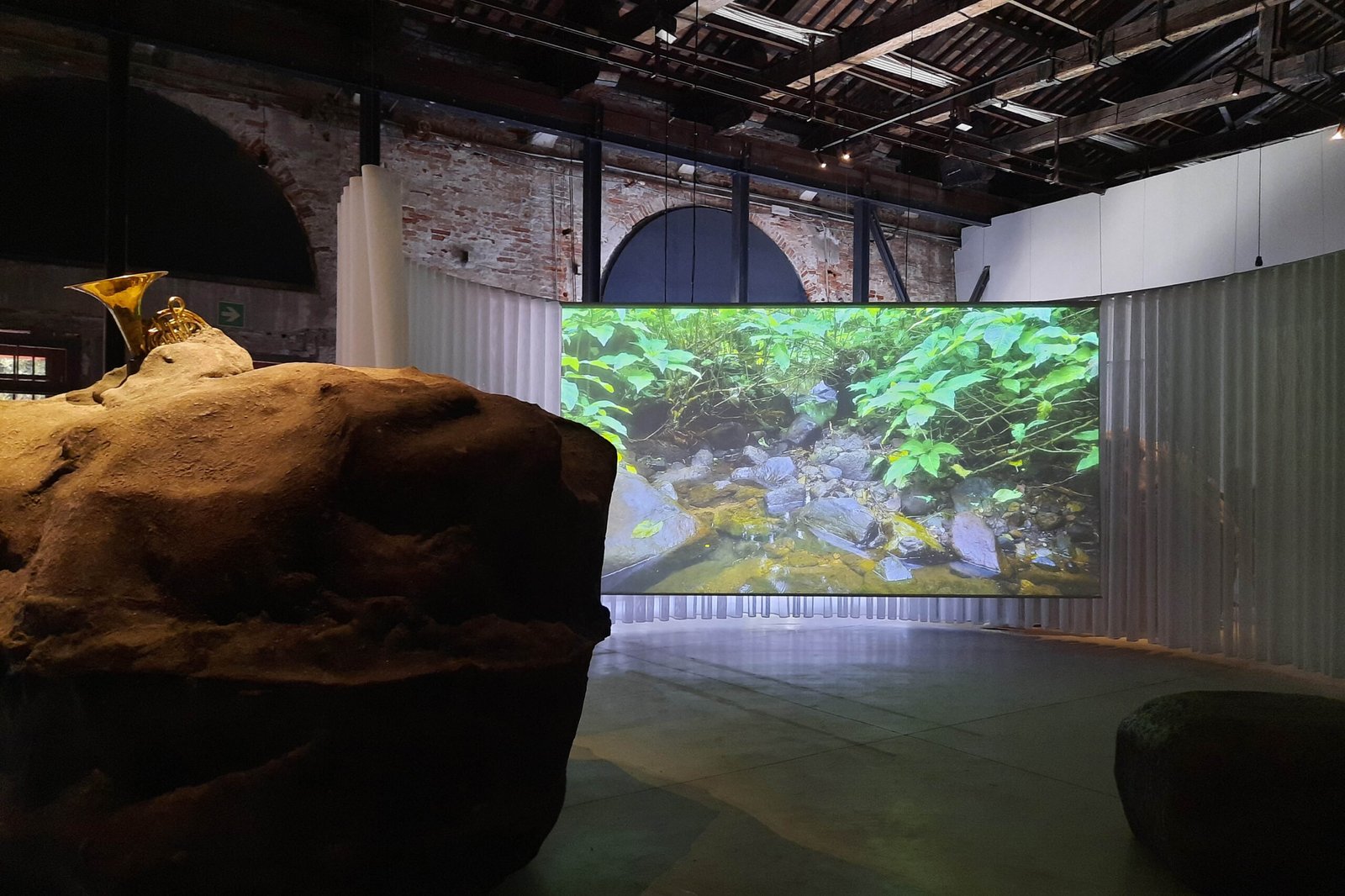

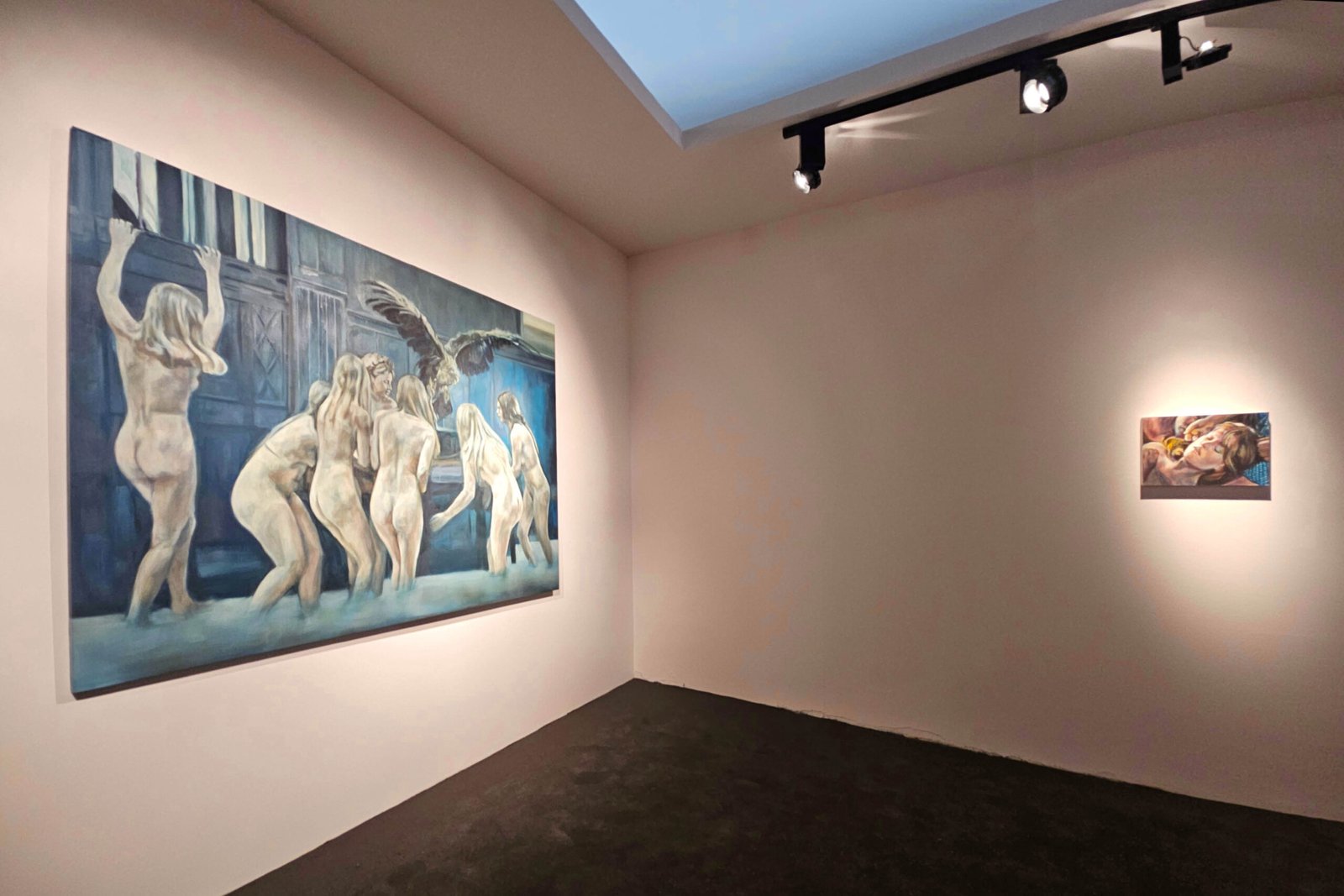

Albania
Love As A Glass of Water
Curator: Antonio Grulli Artist: Iva Lulashi
A life-sized dollhouse with a risqué surprise, the Albanian pavilion recreates Venice-trained Albanian artist Iva Lulashi’s home and studio, albeit stripped to bare, white walls. Each empty room hosts paintings based on film and video stills, depicting mostly female bodies engaged in erotic acts, uninhibited and unbound. The pavilion derives its title from the ‘glass of water theory’ of Russian feminist thinker Alexandra Kollontai, which posits that sexual impulses should be satisfied as easily and freely as drinking a glass of water. In the context of the pavilion, water can also symbolize contained sexual desire constrained by contemporary forces and societal taboos. For the Albanian Pavilion, at least, the glass is in pieces, and the water flows freely.
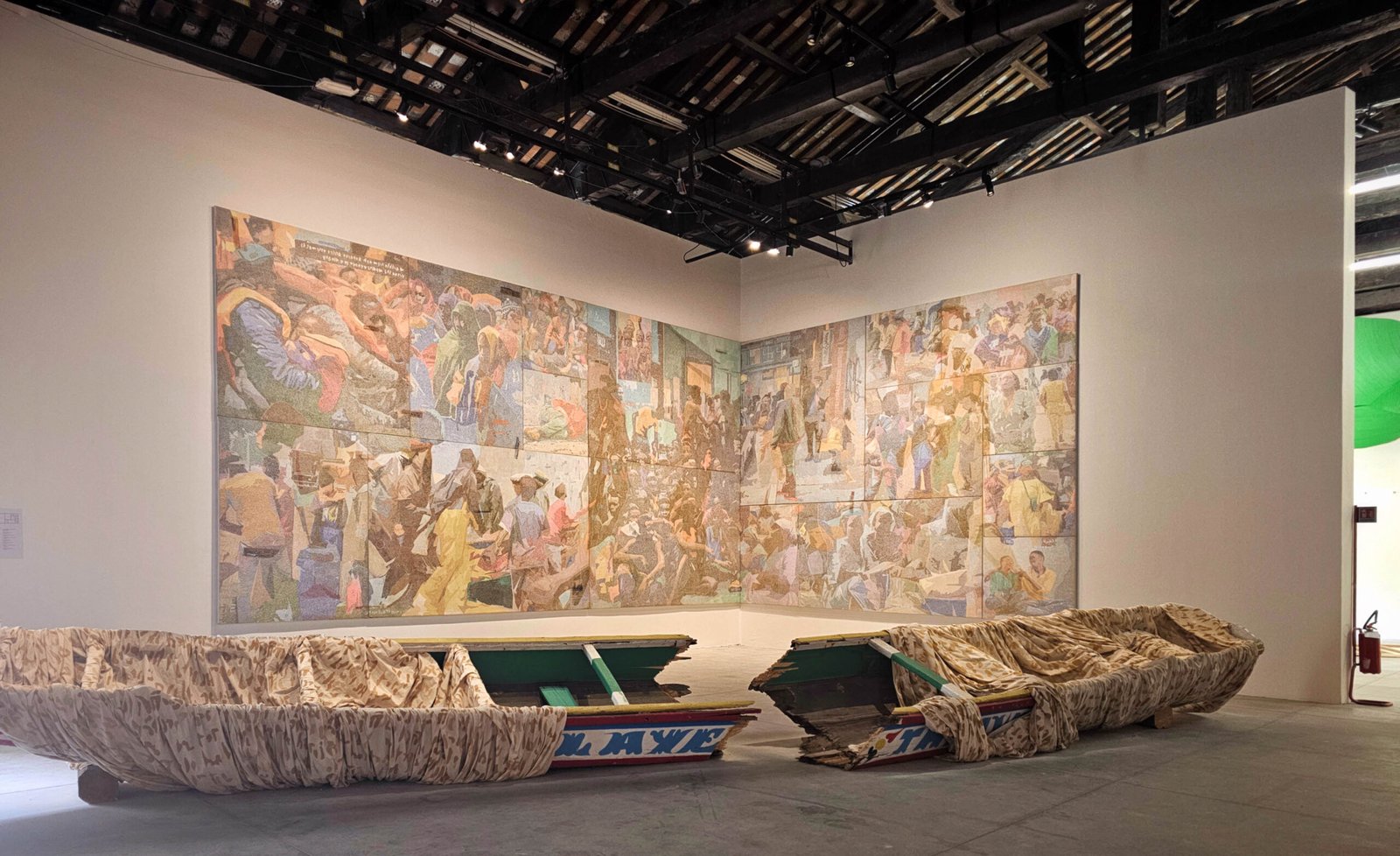

Senegal
Bokk – Bounds
Curator: Massamba Mbaye Artist: Aliounne Diagne
For its Biennale debut, Senegal showcases artist Aliounne Diagne’s innovative ‘unconscious signs’ painting technique in the Artiglerie. Diagne employs paint blobs of varying shapes to create a cohesive image, resulting in a captivating 4-by-12-meter display of interlocking canvases. His brushstrokes pulse with images depicting a community entangled in celebration, tradition, and strife. Amidst the vibrant colors, a traditional canoe lies fragmented in the center of the space, draped in Senegalese textile like a shroud, adorned with the artist’s trademark symbols. This poignant installation serves as a stark reminder of the pressing real-world issues of migration and climate change awaiting beyond the Biennale walls.
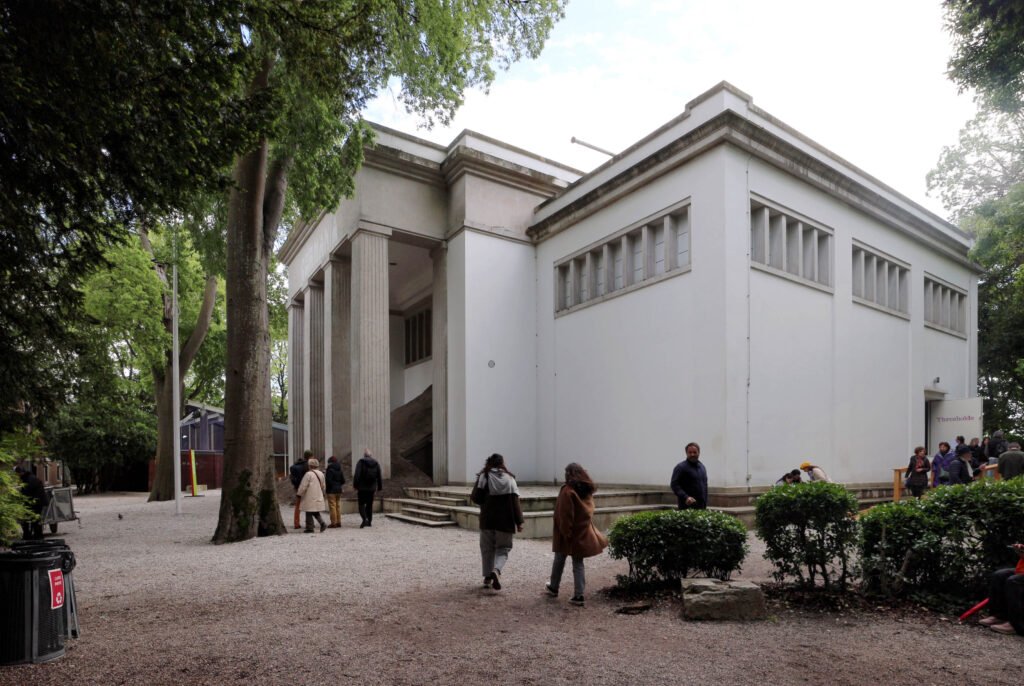

Germany
Thresholds
Curator: Çağla Ilk Artists: Yael Bartana, Ersan Mondtag, Michael Akstaller, Nicole L’Huillier, Robert Lippok, Jan St. Werner
Curated by German-Turkish curator Ilk, this year’s German pavilion presents a densely packed program that explores the thresholds between the past and the future. The dimly lit displays accentuate the severity of the space’s Nazi-era architecture, creating a somber atmosphere. Ersan Mondtag’s contributions are particularly noteworthy, as he shines a spotlight on the narratives of seemingly minor characters: workers. As a poignant gesture, the theater director sealed the Pavilion’s main entrance with Turkish soil from his own plot of land in Anatolia, echoing the disruptive gesture of 2022 Biennale artist Maria Eichhorn, who exposed the space’s foundations.


Entering through the side door, you’re engulfed in thick dust and a cacophony reminiscent of a bustling construction site. At the center stands a towering fiber cement structure that serves as a stage for five actors. One embodies Mondtag’s immigrant father, a fatality of asbestos poisoning from the same brand utilized for the edifice. Bartana’s installations of filmed forest dances and floating spaceships offer a glimmer of hope and lightness to the proceedings, evoking human and cosmic connections. Unfortunately, I missed out on experiencing the La Certosa component of the exhibition, a sound-design-driven section that is the contemplative counterpoint to the dissonant display at the main pavilion.


Japan
Compose
Curator: Sook-Kyung Lee Artist: Yuko Mohri
Japan’s pavilion offers a refreshing contrast to its brooding German neighbor, showcasing artist Yuko Mohri’s collection of kinetic sculptures inspired by the “ad hoc efforts seen in Tokyo subway stations to stop water leaks.” These whimsical sculptures feature a random assortment of household objects ingeniously deployed to address artificially created leaks. While the Rube Goldberg-like contraptions delight observers with their ingenuity and absurdity, they also serve as a poignant commentary on climate change and the water-related crises vulnerable coastal cities like Venice face. The pavilion’s theme and choice of title is a call for global unity and learning to put differences aside to address major issues, not unlike the disparate items made to collaborate on show. The incredibly kawaii display of the pavilion also serves as a lighthearted reminder to visitors that the most memorable or delightful solutions may not always be the most straightforward.
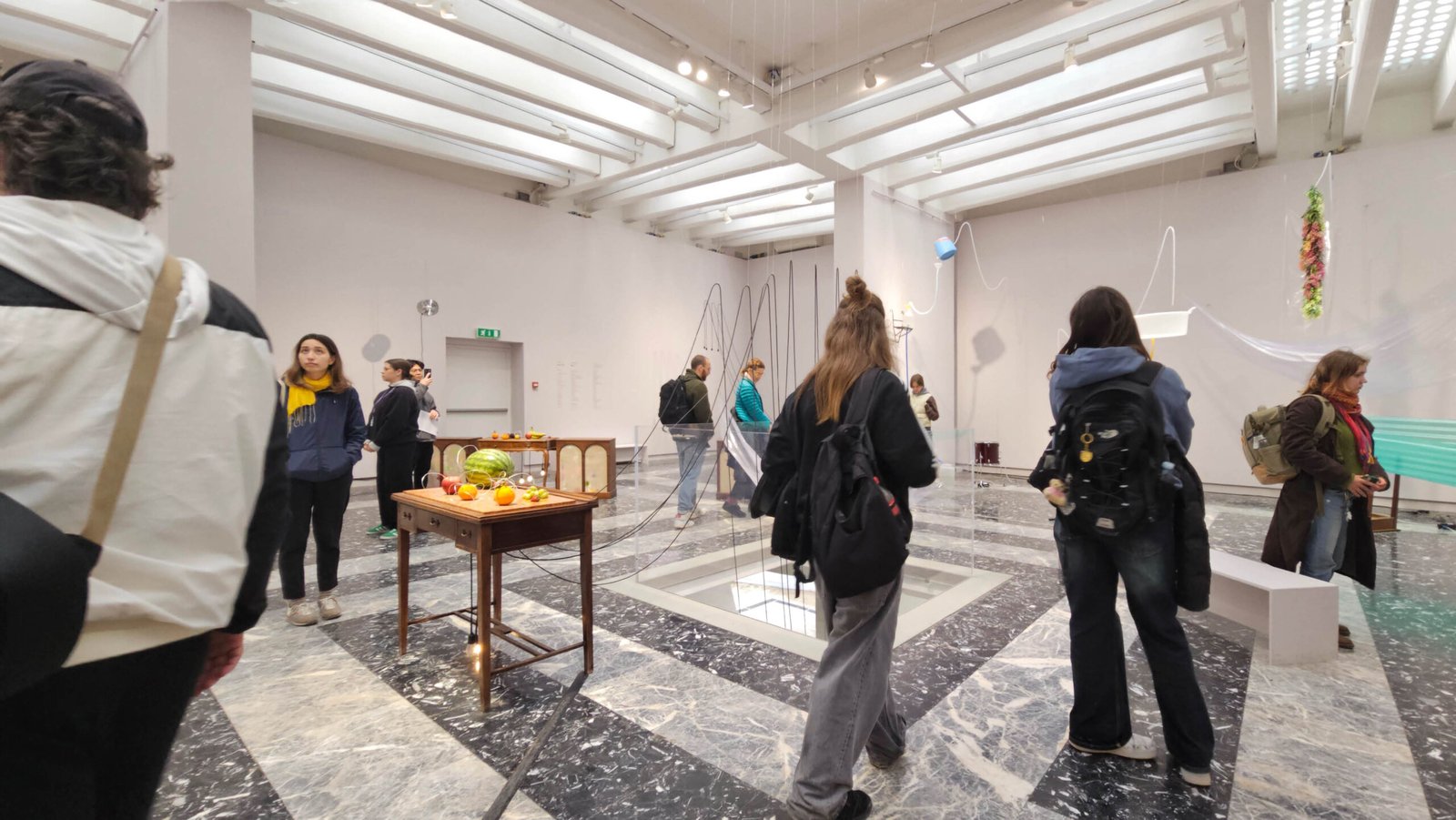
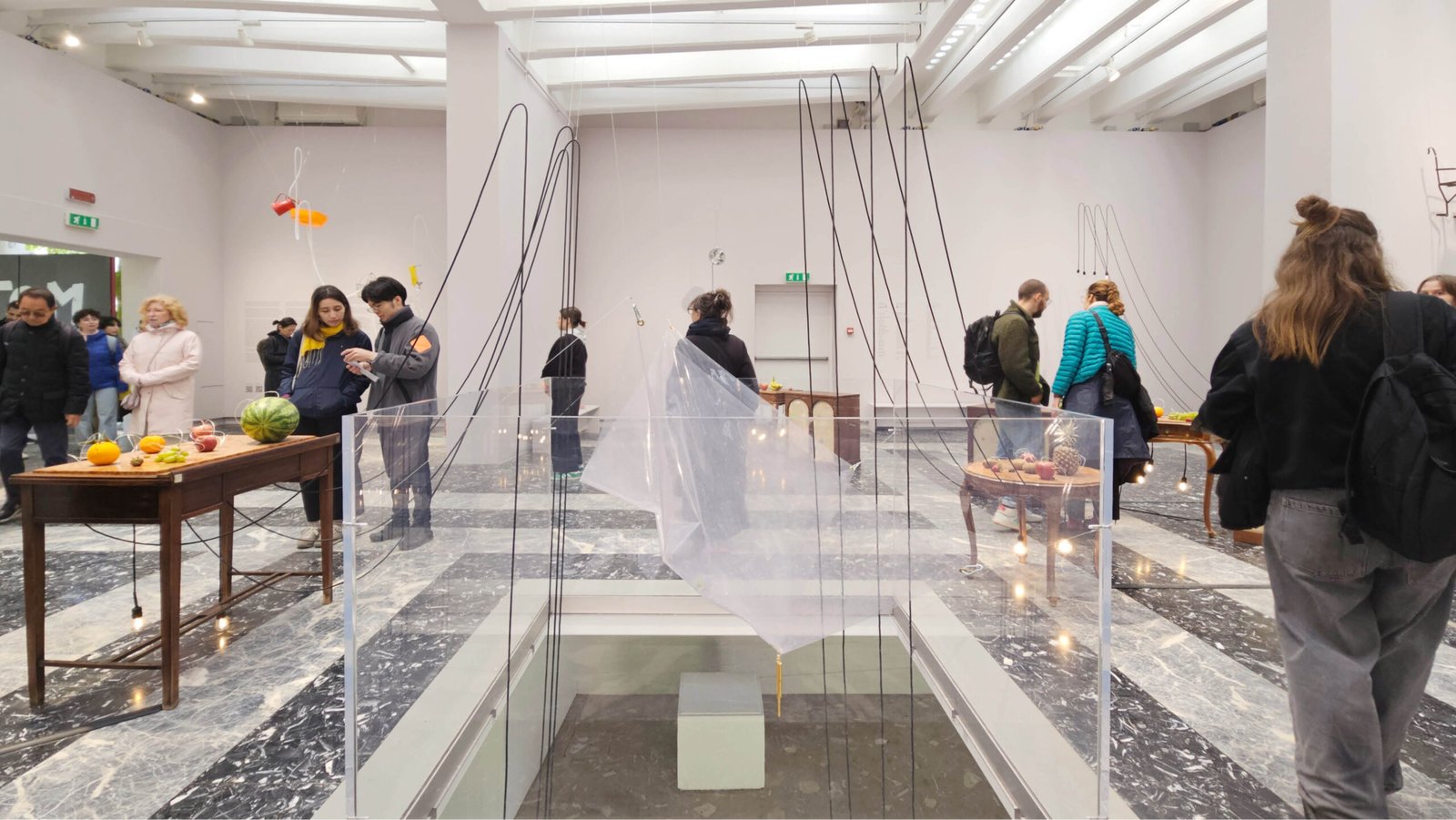
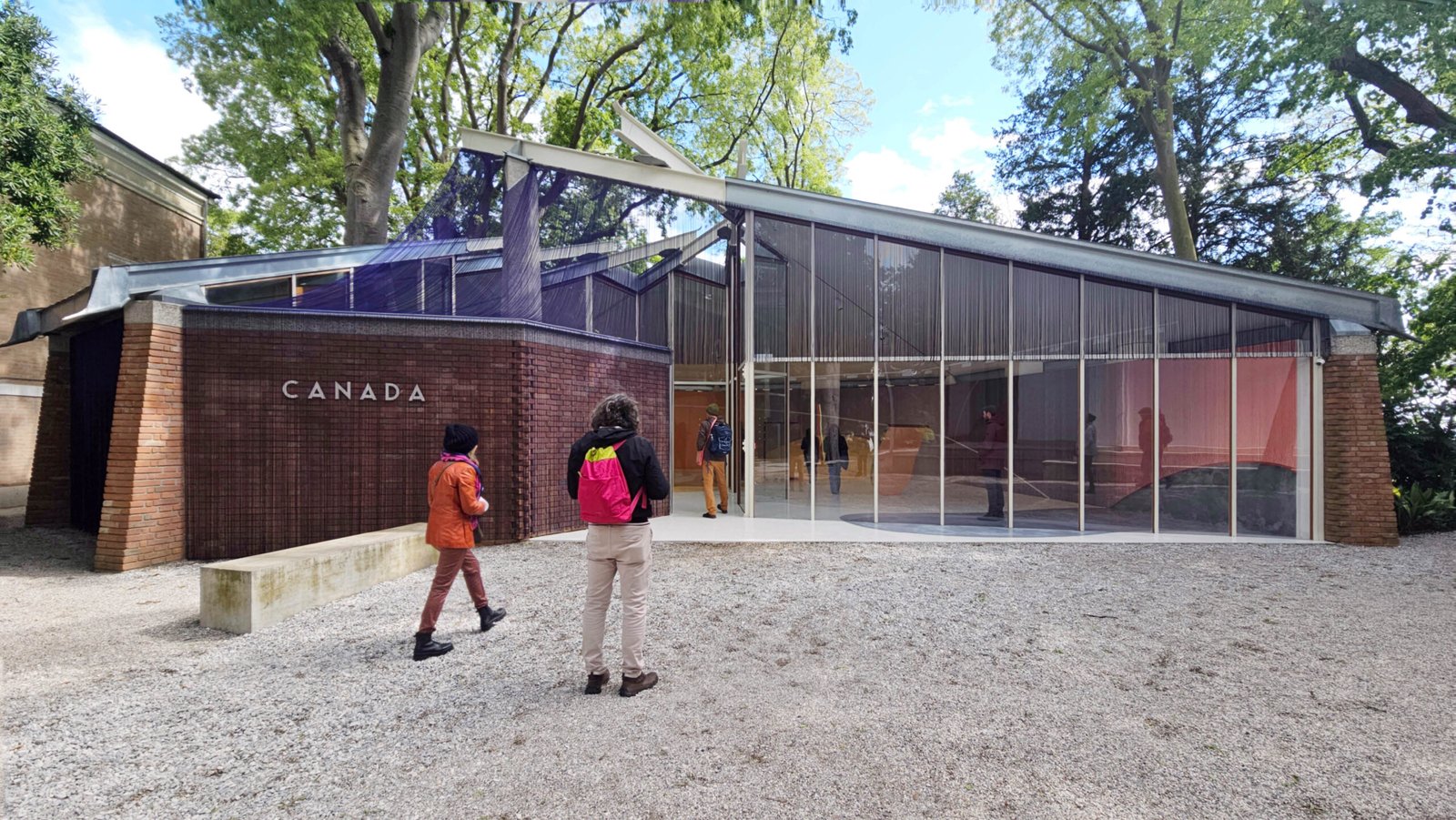

Canada
Trinket
Curator: Gaëtane Verna Artist: Kapwani Kiwanga
The shimmering conterie curtain enveloping the Canadian pavilion accentuates the pleasing peaks and curves of its midcentury modern home at the Giardini. Multi-disciplinary artist Kapwani Kiwanga, whose work fixates on objects of power, imbues the tiny seed bead or the conterie with monumental impact as she connects the glass beads, originally used as currency and sourced from nearby Murano, draping them both inside and outside the pavilion. The multitude of glass bead links, engulfing the structure like vines, allude to the gargantuan influence of commerce and its capacity to both enrich and destroy societies ensnared in its grasp.




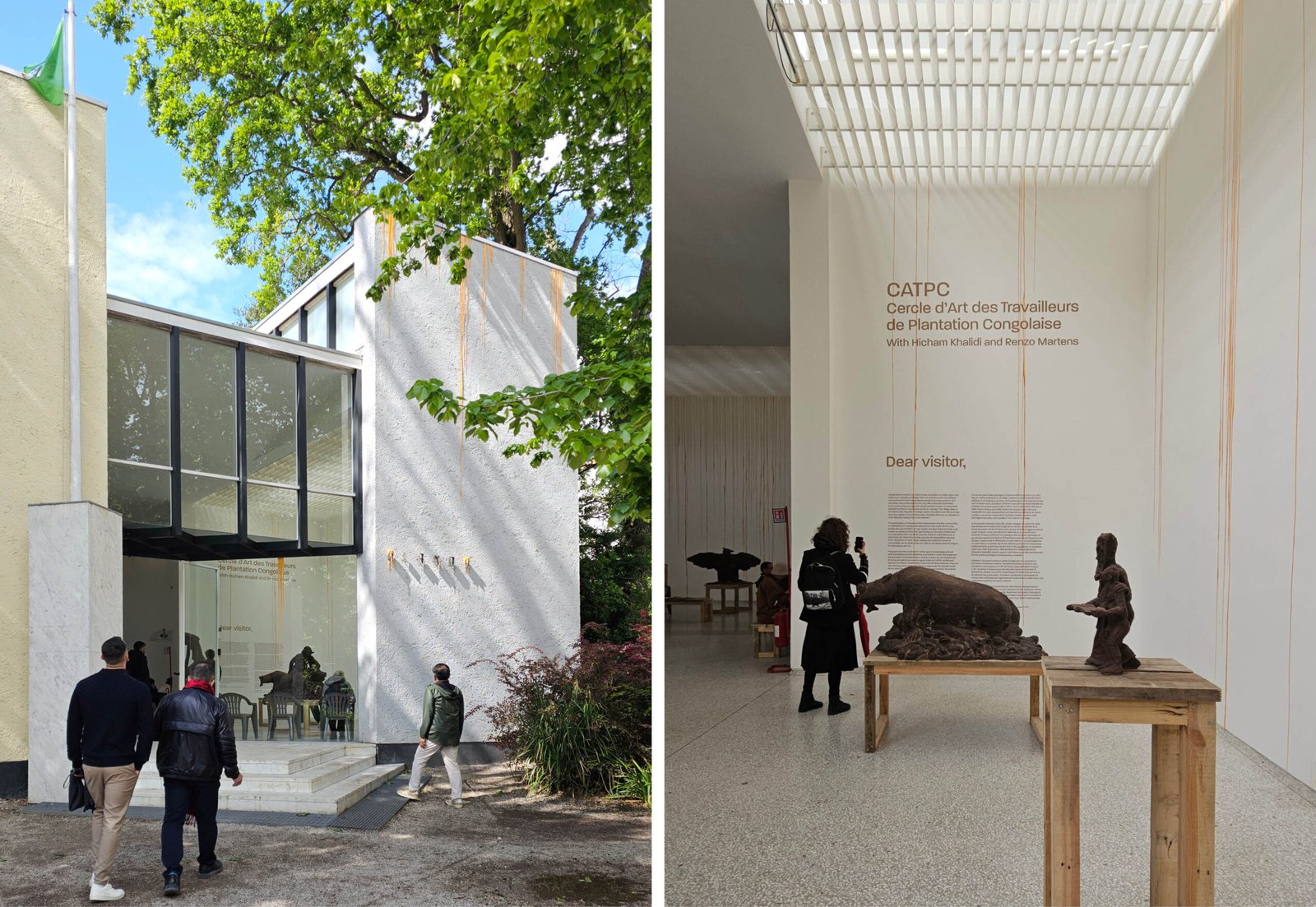

The Netherlands
The International Celebration of Blasphemy and The Sacred
Curator: Hicham Khalidi Artist: Congolese Plantation Workers Art League and Renzo Martens
With its all-but-subtle pavilion title, the Dutch pavilion at Biennale ’24 serves as both a venue of reckoning and reparation. It showcases the works of the Congolese Plantation Workers Art League (CAPTC), dedicated to reclaiming and reforesting ancestral land lost to multinational companies like Anglo-Dutch conglomerate Unilever. CAPTC has successfully recovered 200 hectares of ancestral land through art sales and exhibitions, transforming it into biodiverse agroforests. The collective utilizes the white-washed halls of the Netherlands pavilion, smeared with palm oil, to call out the art world’s complicity in environmental degradation, often funded by the same multinational giants destroying the planet.


CAPTC’s sculptures are crafted from clay sourced from the reclaimed plantation of Lusanga, formerly owned by Unilever, and cast in palm oil and cocoa in Amsterdam. This poignant gesture transforms the byproducts of suffering and loss into objects that foster new life and opportunities for the community. While admiring the intricate, earthen sculptures on display, it’s impossible not to feel complicit in the systems and consumption that perpetuate this community’s suffering. Yet, there’s a sense of empowerment in witnessing how the wronged community has taken matters into its own hands to confront the situation and seek justice. The CAPTC aims to leverage its six-month platform at the Biennale to amplify its work, hold oppressors accountable, and inspire similar movements worldwide. After all, there can be no forgiveness without justice. •
Sources: La Biennale Di Venezia Short Guide. 1st ed., La Biennale Di Venezia, 2024; “At the Venice Biennale, the German Pavilion Undergoes a Transformation.” The New York Times, 18 Apr. 2024, www.nytimes.com/2024/04/18/arts/design/venice-biennale-german-pavilion.html. Accessed 28 May 2024.; “Venice Biennale.” Mondriaan Fund, 20 Apr. 2024, www.mondriaanfonds.nl/en/activities/venice-biennale/. Accessed 28 May 2024.
La Biennale Arte di Venezia 2024 is up from April 20 to November 24, 2024.
